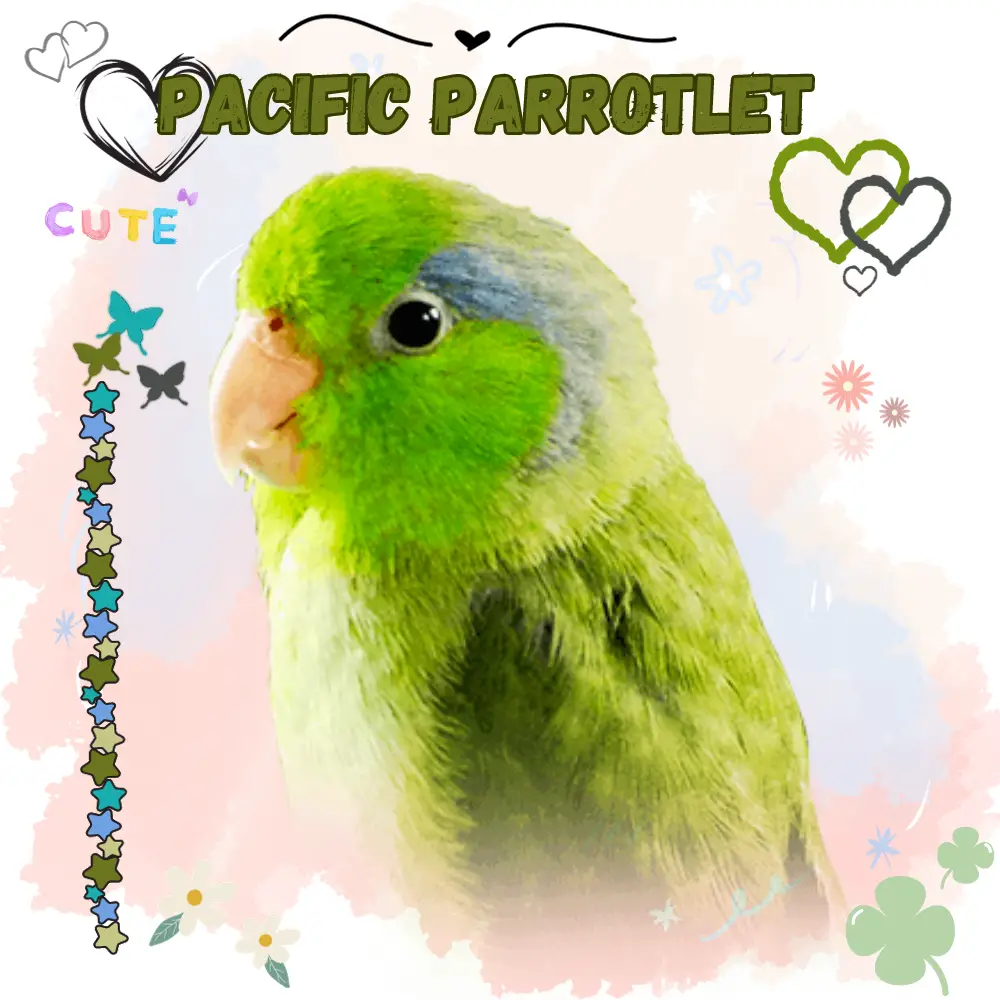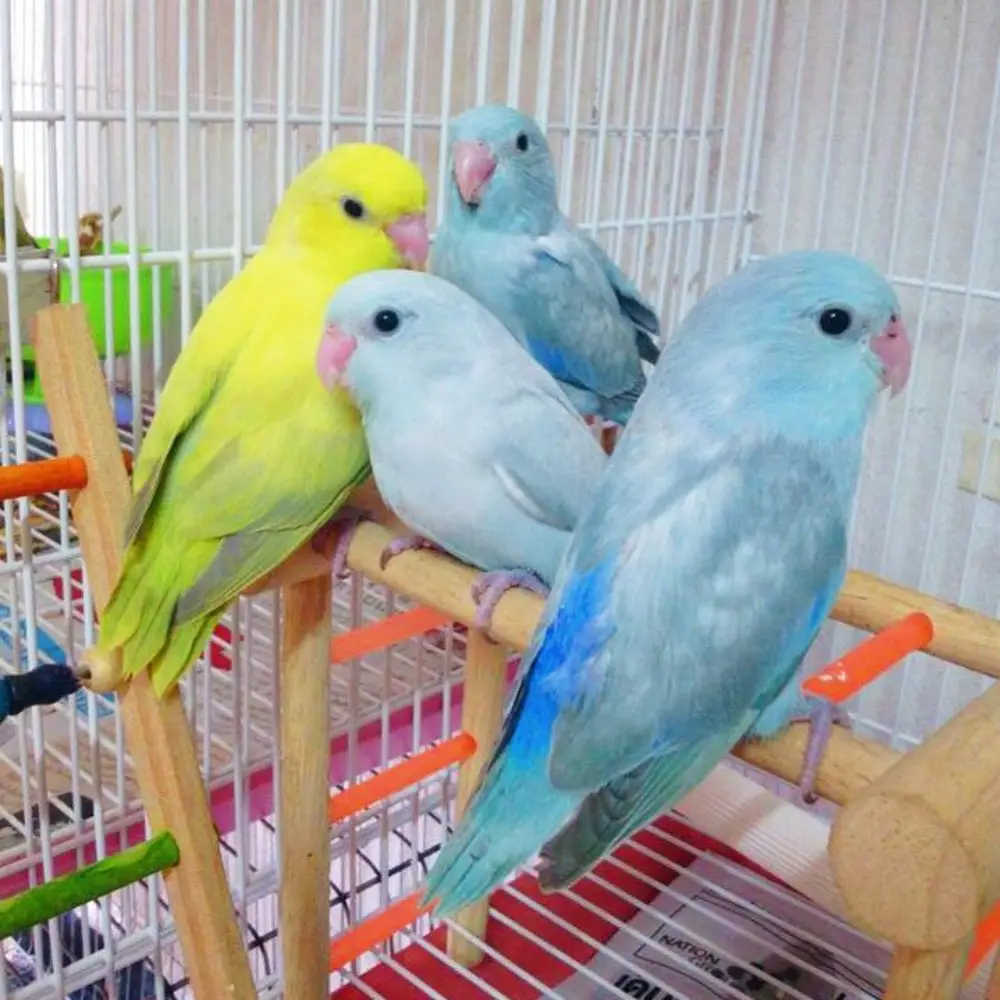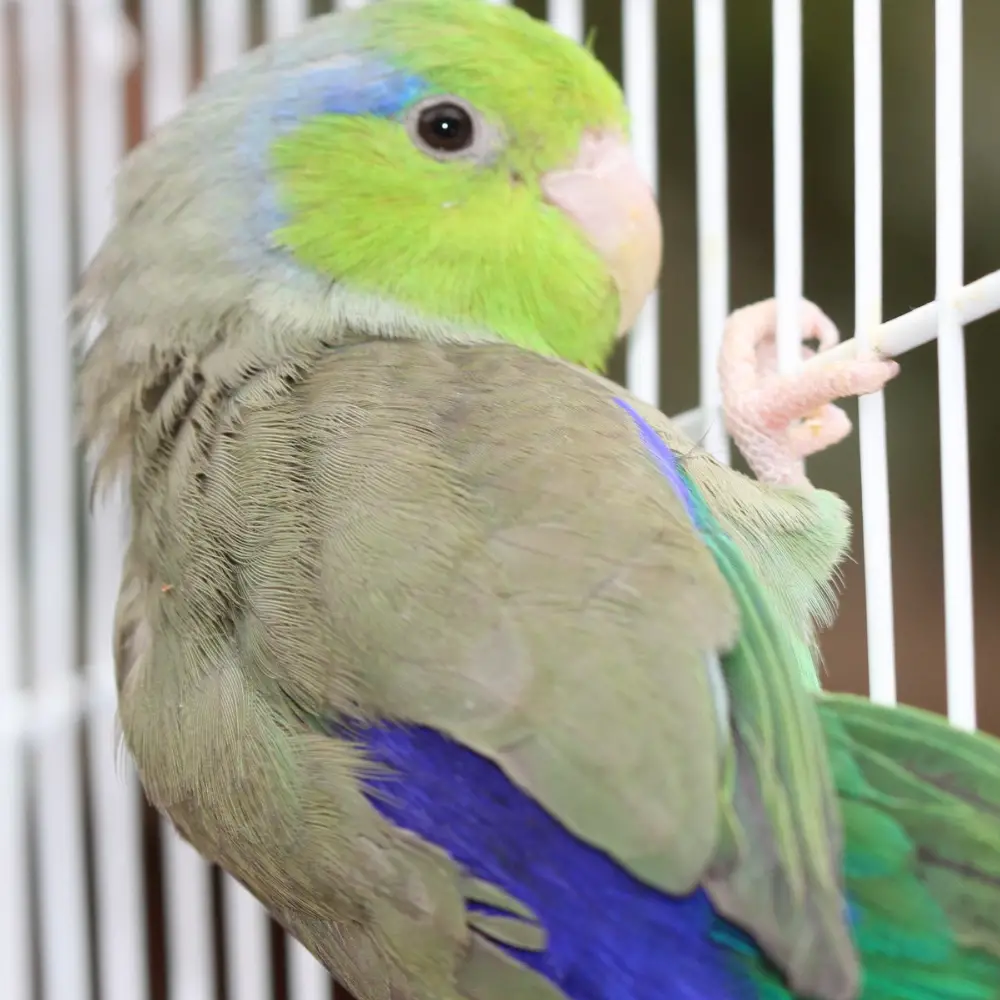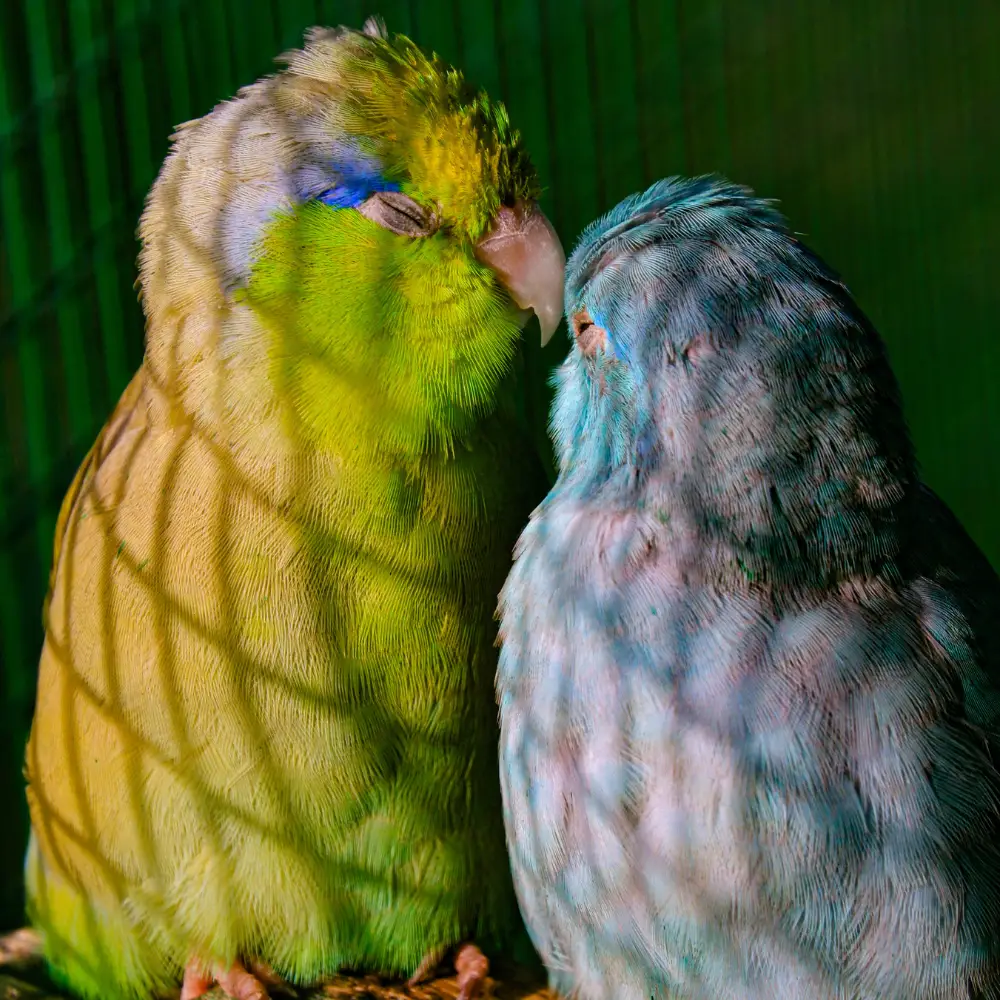
Pacific parrotlet are dimorphic species, with their natural color being mostly green. Males and females can be distinguished by the bright blue spots on their backs and behind their eyes. parrotlets also come in many color mutations, such as lutino, blue, and albino.
The species of which the Pacific parrotlet is a part: Psittacids (parrots from Africa and America)
Its appearance: The blue parrotlet: The male: Green with a blue stripe behind the eyes and blue on the back and wings; The female: Same, but no blue stripe and perhaps slightly blue or green behind the eyes. It weighs 24 to 35g
Its origins: Mexico, Central America, and South America
Its lifespan: From 20 to 30 years
Number of eggs per nest: 4 to 5 and sometimes up to 7
Did you know that… parrotlets are the smallest parrots, but they have a lot of personality.
Pacific parrotlet behavior

A Pacific parrotlet behaves much like its larger cousins. He is very playful, active, social, and loves to interact. He never stays still, and everything around him arouses curiosity in him.
Additionally, the Pacific parrotlet craves interaction, including with you. You must therefore pay attention to him daily, play with him regularly, and let him move as much as possible.
The parrotlet remains a feisty, idiosyncratic, somewhat cheeky, strong-willed bird. If you don’t take care of him enough, he will become agitated, moody, and aggressive.
On the contrary, if you pay attention to him, you will find yourself with a wonderful and very friendly companion. If you don’t have enough time for him, you can decide to keep two specimens, but your relationship with them will then be less close.
The parrotlet can learn to imitate sounds, but it is not the best talker. It is a quiet bird and therefore ideal for an apartment.
Parrotlet food
It is advisable to offer your Pacific parrotlet pellets specially designed for its species and which contain all the essential elements in the right proportions.
This will prevent him from sorting his food at mealtime. Additionally, supplement this with a small quantity of vegetables, such as kale, spinach, and carrot tops, as well as fruits: apples, kiwis, mangoes, pears… Serve them in small pieces.
Parrotlet cage

You can keep a Pacific parrotlet in a cage as well as an aviary. As is often the case, the bigger the cage, the better. But for this bird, the cage must measure at least 60 x 60 x 60 cm. You can also keep several Pacific parrotlets outside, in an aviary 2 to 3 m long, 1 m wide, and 1 m high for a pair.
In the cage or aviary, install perches for your Pacific parrotlet. Also, provide drinkers and containers so he can take a bath. Also invest in lots of toys (preferably hanging) made of rope, leather, and softwood that he can nibble on. Finally, know that he loves swings.
If you use coral powder as a ground cover, you will need to change it once a week. Also clean toys and perches weekly. Change the food and water bowls as well as the bath bowl every day.
Parrotlet breeding

Each pair must have its breeding cage, separated from the other cages by a partition. Place a heavenly parrot nest box in the cage, with softwood shavings as ground cover.
The female lays one egg every day. As soon as two or three eggs are laid, she begins to incubate. When the oldest young is 15 days old, you can raise the other young by hand.
Parrotlet as pet
Colorful, charming, and intelligent, Parrotlets have increasingly become popular pets in recent years. Their small size and quiet nature make them an ideal choice for people who live in apartments or condos.
Nicknamed “pocket parrots” in the pet trade, these little birds are the smallest members of the parrot family and are just as intelligent as many larger species. Some learn to speak well, although this type is not particularly noted for speaking ability.
An interesting fact about Parrotlets is that their closest relative is the Amazon parrot. Although these two species differ greatly in size, owners often talk about their striking similarities.
While bobcats may be tiny, they are by no means “low maintenance.” While they are naturally easier to groom compared to larger birds, they must be socialized and handled daily to keep their buildup down.
Parrotlet training
Highly active, parrotlet need plenty of room to play, and plenty of toys to play with.
They are curious little birds and will get into your things if you don’t provide them with toys of their own! If you want to own a Parrotlet, you should be sure that you can set aside a bird-safe area for your pet to play for at least one to two hours a day.
They need to be able to get out of their cages, stretch their wings, and exercise their leg muscles to maintain their physical and mental health.




















